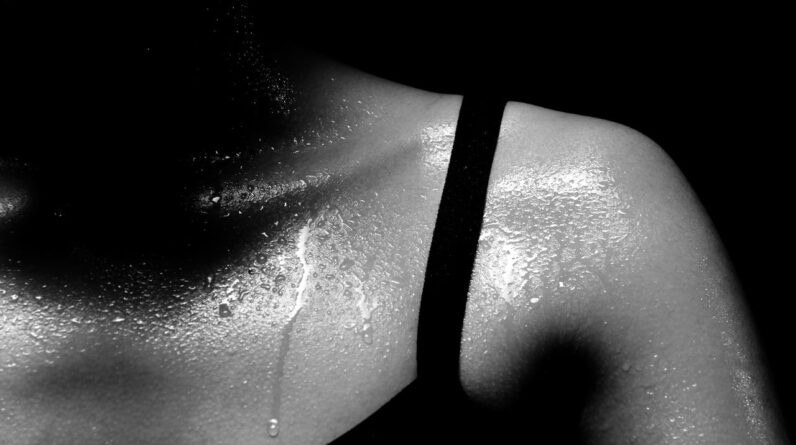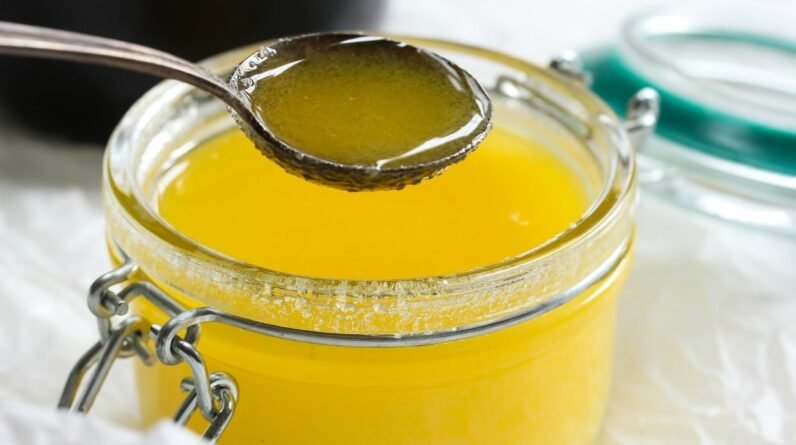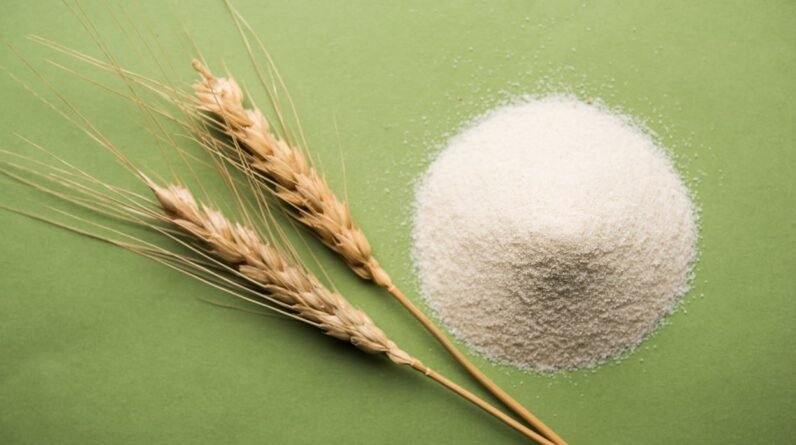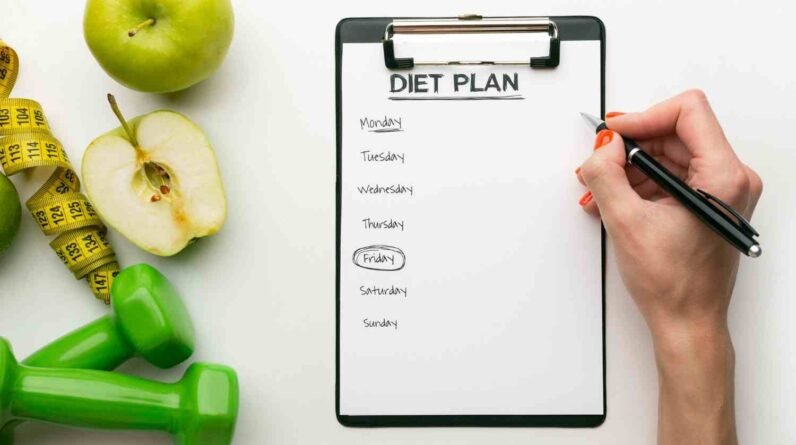
Sweating is a natural bodily function that we all experience, especially during physical activity or hot weather. It’s often associated with hard work, exercise, and the pursuit of a healthier, more toned physique. Many believe that the more they sweat, the more fat they burn. This common misconception has led to the pervasive belief that sweating directly indicates fat loss. However, the relationship between sweating and fat loss is far more complex than it may seem.
In this article, we will delve into the science behind sweating, its connection to calorie expenditure, and whether sweating truly leads to significant fat loss. By debunking the myths and misconceptions surrounding this topic, we hope to provide you with a clearer understanding of how your body burns fat and the role that sweating plays in achieving your fitness goals. So, let’s embark on this journey of discovery and separate fact from fiction when it comes to the age-old belief that sweating is a shortcut to shedding those extra pounds.
What Causes Sweating?
Before we can truly understand the relationship between sweating and fat loss, it’s essential to grasp the fundamentals of what causes sweating in the first place. Sweating is a vital physiological process that serves several crucial functions in the human body:
A. Eccrine and Apocrine Sweat Glands
The human body contains two types of sweat glands, eccrine and apocrine glands. Eccrine glands are distributed all over the body and are responsible for producing most of the sweat we associate with cooling down during exercise or hot weather. Apocrine glands, on the other hand, are found in areas like the armpits and groin and are responsible for producing a different type of sweat that is odourless when secreted but can develop an odour when it comes into contact with bacteria on the skin.
B. Regulation of Body Temperature
The primary purpose of sweating is to regulate body temperature. When your body overheats due to physical exertion or external heat, the hypothalamus, a part of the brain, triggers the eccrine sweat glands to produce sweat. As sweat evaporates from the skin’s surface, it dissipates heat and helps cool down the body, maintaining a stable internal temperature.
C. Electrolyte Balance
Sweating not only consists of water but also contains essential electrolytes like sodium and potassium. These electrolytes play a vital role in maintaining various bodily functions, including nerve and muscle function. Sweating helps regulate the balance of these electrolytes in the body.
D. Detoxification
While not the primary function of sweating, some proponents of detox diets and saunas claim that sweating can help rid the body of toxins. While this idea is debated in the scientific community, it’s worth mentioning that sweating does play a role in eliminating some waste products.
Summary
Understanding the mechanisms behind sweating is crucial before exploring its connection to fat loss. Sweating serves multiple vital functions in the body: it involves eccrine and apocrine sweat glands, which regulate temperature and produce different types of sweat; helps maintain electrolyte balance by releasing sodium and potassium; and, although not its primary purpose, contributes to detoxification by eliminating certain waste products. Sweating primarily helps cool the body during overheating, making it an essential physiological process.
The Relationship Between Sweating and Calorific Burn
Now that we’ve established why we sweat, it’s time to address a key question: Does sweating lead to a significant increase in calorie expenditure, and therefore, fat loss? Let’s examine the intricacies of the relationship between sweating and calorific burn:
A. Clarification of the Connection
Sweating itself does burn some calories, but the amount is relatively minimal. The energy required for your body to produce and release sweat is not substantial enough to make a significant impact on your overall calorie expenditure. In fact, the calories burned through sweating are often negligible in the context of a comprehensive weight loss plan.
B. Sweating and Exercise
It’s important to note that when you engage in physical activities that induce sweating, such as jogging, cycling, or working out at the gym, you burn calories. Sweating during exercise is a sign that your body is working to cool down and maintain a stable temperature. However, the calories burned during exercise are primarily attributed to the increased metabolic rate and muscle engagement, not solely to the act of sweating.
C. Factors Influencing Sweating
The amount a person sweats can vary significantly based on individual factors such as genetics, fitness level, environmental conditions, and hydration status. Some people naturally sweat more than others, but this doesn’t necessarily correlate with their rate of fat loss.
D. Dehydration and Sweat
Excessive sweating without adequate rehydration can lead to dehydration. While this may result in temporary weight loss due to fluid loss, it’s not a healthy or sustainable method for fat loss. Dehydration can have adverse health effects and is not a recommended approach for achieving long-term fitness goals.
Summary
The relationship between sweating and fat loss is multifaceted. While sweating does burn some calories, the energy expenditure associated with producing sweat is minimal and not a significant factor in overall calorie expenditure for fat loss. Calories burned during exercise, which may induce sweating, primarily result from increased metabolic rate and muscle engagement rather than sweating itself. Additionally, individual factors, such as genetics and hydration status, can influence the amount of sweat produced. Excessive sweating without adequate rehydration can lead to temporary weight loss due to fluid loss, but it is not a healthy or sustainable method for fat loss and can have negative health implications.
Does Sweating Induce Weight Loss or Fat Loss?
The common belief that sweating leads to weight loss can be misleading and is often conflated with fat loss. In this section, we will explore the crucial distinction between weight loss and fat loss and address how sweating fits into this equation:
A. Differentiating Between Weight Loss and Fat Loss
Weight Loss: When you sweat profusely, especially in hot conditions or during intense physical activity, you may experience a decrease in your overall body weight. However, it’s important to understand that this weight loss is primarily due to the loss of fluids and electrolytes through sweating. This is often referred to as “water weight” and can be quickly regained when you rehydrate.
Fat Loss: Fat loss, on the other hand, involves the reduction of adipose tissue, which is the storage form of excess energy in the body. It occurs when you consistently maintain a calorie deficit, meaning you burn more calories than you consume over an extended period. Fat loss is a gradual process and leads to a more sustainable reduction in body fat percentage.
Read More: Fat Loss Vs Weight Loss: Is There A Difference?
B. The Role of Water Weight in Sweating
Sweating can give the illusion of significant weight loss due to fluid loss, which can be misleading for those seeking long-term fat loss. As soon as you rehydrate by drinking water or consuming fluids, your body will regain the lost weight.
Diuretics or extreme sweating practices, such as saunas or excessive use of sweat-inducing products, may lead to rapid fluid loss, but this is not a healthy or sustainable approach to weight management.
C. Temporary Nature of Weight Loss Through Sweating
Weight loss through sweating is temporary and does not equate to lasting fat loss. It does not address the underlying factors contributing to excess body fat, such as diet and exercise habits.
Focusing solely on sweating as a means of weight management can lead to frustration and disappointment when the lost weight quickly returns once you rehydrate.
Summary
Sweating can indeed result in a temporary decrease in body weight due to fluid loss, but this should not be confused with fat loss. Fat loss occurs through a sustained calorie deficit, regular exercise, and healthy eating habits. While sweating is a natural bodily response that serves essential functions, it is not a direct or effective method for inducing lasting fat loss. To achieve your fat loss goals in a healthy and sustainable way, it’s crucial to adopt a comprehensive approach that encompasses diet, exercise, and lifestyle choices.
Common Myths About Sweating and Fat Loss
In the pursuit of a fitter and leaner physique, many myths and misconceptions about sweating and fat loss have emerged. In this section, we will debunk some of the most prevalent myths to provide you with a clearer understanding of what sweating can and cannot do for your fat loss goals:
A. Debunking the Myth of “Sweating Out” Fat
Myth: Some believe that sweating can “sweat out” or eliminate fat from the body.
Reality: Fat loss occurs when you create a sustained calorie deficit by burning more calories than you consume. Sweating does not directly remove fat from your body. It primarily helps regulate body temperature.
B. Addressing Misconceptions About Sauna Use
Myth: Spending extended periods in a sauna or steam room can lead to substantial fat loss.
Reality: Sauna use primarily induces sweating, leading to temporary fluid loss and potential dehydration. Any weight lost in a sauna is quickly regained when you rehydrate. Saunas offer other potential health benefits, but they are not effective tools for fat loss.
C. Highlighting the Importance of Diet and Exercise
Myth: Sweating excessively during a workout is a sign of an effective fat-burning session.
Reality: The intensity of your workout and the calories burned during exercise are more important indicators of fat loss than the amount you sweat. A well-balanced diet and regular exercise are essential for achieving lasting fat loss.
D. Sweating as a Detox Method
Myth: Sweating profusely can help the body detoxify and remove toxins.
Reality: While sweating does contribute to the elimination of some waste products, the liver and kidneys are the body’s primary detoxification organs. Sweating alone is not a comprehensive detox method.
E. Misunderstandings About Spot Reduction
Myth: Sweating excessively from a specific area of the body will lead to fat loss in that area (spot reduction).
Reality: Spot reduction is a myth. Fat loss occurs uniformly throughout the body and cannot be targeted to specific areas through sweating or exercise. Building muscle in specific areas can enhance their appearance, but fat loss is systemic.
Practical Tips for Healthy Fat Loss
While sweating has its own merits and is a natural part of our body’s functions, it’s crucial to understand that fat loss requires a comprehensive approach that goes beyond relying on sweating alone. Here are some practical tips for achieving healthy and sustainable fat loss:
A. Maintain a Balanced Diet
Focus on consuming a well-rounded diet rich in whole foods, including fruits, vegetables, lean proteins, whole grains, and healthy fats.
Practice portion control and be mindful of calorie intake to create a calorie deficit necessary for fat loss.
Avoid crash diets or extreme restrictions, as they can be harmful and unsustainable.
B. Engage in Regular Physical Activity
Incorporate a mix of cardiovascular exercise (e.g., jogging, cycling) and strength training into your fitness routine.
Aim for at least 150 minutes of moderate-intensity aerobic exercise or 75 minutes of vigorous-intensity aerobic exercise per week, as recommended by health guidelines.
C. Monitor Your Caloric Intake and Expenditure
Keep a food diary to track what you eat and your portion sizes.
Utilize fitness apps or wearables to monitor your calorie expenditure during exercise.
D. Stay Hydrated
Maintain proper hydration by drinking water regularly throughout the day. Adequate hydration supports overall health and can aid in fat loss.
Avoid excessive sweating practices that lead to dehydration, as they are not sustainable or healthy methods for weight management.
E. Get Sufficient Sleep
Aim for 7-9 hours of quality sleep per night. Lack of sleep can disrupt hormones related to appetite and increase cravings for unhealthy foods.
F. Manage Stress
Incorporate stress-reduction techniques like meditation, yoga, or deep breathing exercises into your daily routine. High-stress levels can hinder fat loss efforts.
G. Set Realistic Goals
Establish achievable, incremental goals for fat loss. Rapid and extreme weight loss is often unsustainable and can lead to health issues.
H. Seek Professional Guidance
Consider consulting a registered dietitian, personal trainer, or healthcare professional for personalized guidance on nutrition and exercise tailored to your needs and goals.
I. Prioritise Long-Term Health
Focus on making sustainable lifestyle changes that promote overall health and well-being rather than quick fixes. Remember that fat loss should be approached with the goal of long-term health improvement rather than just aesthetics.
how2fit Suggestion
Effectively, sweating is a process wherein the body’s water is released with some unwanted waste, leading to an imperceptible shift in water weight, making one feel slightly lighter.
This water reduction can easily be levelled back up when one rehydrates; which is strongly recommended.
Always rehydrate with pure water or the body will have to bear some serious consequences of dehydration like extreme exhaustion, dizziness, and a weak or rapid pulse.
Conclusion
In the pursuit of fitness and fat loss, it’s imperative to recognize the true role of sweating. Sweating is a fundamental bodily function with significant benefits, including temperature regulation, skin cleansing, and stress relief. However, it should not be misconstrued as a direct mechanism for substantial fat loss. While sweating does burn some calories, the energy expenditure from sweating alone is minimal and insignificant in the context of a comprehensive fat loss strategy.
To achieve meaningful and sustainable fat loss, individuals should focus on a holistic approach that combines a balanced diet, regular exercise, proper hydration, and stress management. Sweating should be viewed as a natural byproduct of physical activity and not the primary indicator of fat loss. By adopting a well-rounded lifestyle that prioritizes overall health, individuals can attain their fat loss goals while improving their overall well-being in the long run.
Disclaimer: The purpose of this article is just to disperse knowledge and raise awareness. It does not intend to replace medical advice from professionals. For further information please contact our certified nutritionists Here
Frequently Asked Questions (FAQs)
Q1: Does sweating during exercise mean I’m burning fat?
A1: Sweating during exercise is a sign that your body is working to cool down and maintain a stable temperature. While you do burn calories when you exercise, the calories burned are primarily a result of increased metabolic rate and muscle engagement, not solely due to sweating. Fat loss occurs when you maintain a calorie deficit over time.
Q2: Can I lose weight by sitting in a sauna or steam room to sweat it out?
A2: Saunas and steam rooms induce sweating and may lead to temporary weight loss due to fluid loss, but this weight loss is not the same as fat loss. Rehydrating will quickly regain the lost weight. Saunas have other potential health benefits, but they are not effective tools for fat loss.
Q3: Are there any health risks associated with excessive sweating or dehydration?
A3: Yes, excessive sweating without proper rehydration can lead to dehydration, which can have adverse effects on health, including electrolyte imbalances, dizziness, and even heat-related illnesses. It’s essential to maintain proper hydration during and after sweating.
Q4: Can I spot reduce fat by sweating more from specific areas of my body?
A4: No, spot reduction is a myth. Fat loss occurs uniformly throughout the body and cannot be targeted to specific areas through sweating or exercise. Building muscle in specific areas can enhance their appearance, but it doesn’t specifically burn fat in those areas.
Q5: How can I achieve healthy and sustainable fat loss?
A5: Healthy fat loss is best achieved through a combination of factors, including a balanced diet that creates a calorie deficit, regular exercise that includes both cardiovascular and strength training, adequate hydration, sufficient sleep, stress management, and overall lifestyle choices that promote well-being.
Q6: What role does sweating play in detoxification?
A6: Sweating does contribute to the elimination of some waste products from the body, but it’s not the primary method of detoxification. The liver and kidneys are the main organs responsible for detoxifying the body. Sweating can complement these processes but should not be relied upon as the sole means of detoxification.
Q7: Can I lose fat without sweating or engaging in intense workouts?
A7: Yes, you can achieve fat loss without intense sweating or vigorous workouts. Fat loss primarily depends on maintaining a calorie deficit, which can be achieved through a balanced diet and moderate physical activity. While exercise can accelerate fat loss, it doesn’t have to be extremely intense or cause excessive sweating to be effective.
Q8: Are there any health benefits to sweating besides regulating body temperature?
A8: Yes, sweating offers several health benefits. It can help cleanse the skin, improve circulation, support the immune system, and promote relaxation and stress relief. Engaging in activities that induce sweating, such as exercise, can also release endorphins, which can enhance mood and overall well-being.
Q9: Does sweating more during a workout mean I’m burning more calories?
A9: Sweating more during a workout is not necessarily an indicator of burning more calories. Sweat production varies from person to person and is influenced by factors like genetics and environmental conditions. The effectiveness of your workout for calorie burning is better determined by its intensity and duration.
Q10: Is there an ideal temperature for workouts to maximize calorie burn?
A10: The temperature of your workout environment does influence sweating, but it doesn’t necessarily correlate with calorie burn. More important factors for calorie burn during exercise are the intensity and duration of the activity. You can burn calories effectively in various temperature conditions.
Research Links
- Anatomy, Skin, Sudoriferous Gland: https://www.ncbi.nlm.nih.gov/books/NBK513244/#:~:text
- Sweating Rate and Sweat Sodium Concentration in Athletes: A Review of Methodology and Intra/Interindividual Variability: https://www.ncbi.nlm.nih.gov/pmc/articles/PMC5371639/
- Organs of Excretion: https://humanbiology.pressbooks.tru.ca/chapter/18-2-organs-of-excretion/







